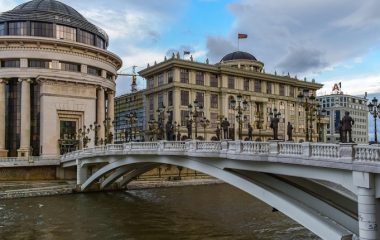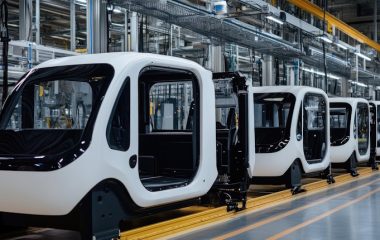
Photo: Lafarge Serbia
Even though Serbian cement plants have been using waste as fuel since 2008 they have only managed to substitute 22% of fossil fuel so far, two times below the European average. The main reasons for this state of affairs are lack of compliance with European regulations and a lack of waste market regulation in Serbia.
Serbia lags far behind the worst EU perfomers in terms of the percentage of fossil fuels replaced with refuse-derived fuels, Dejana Milinković, director of the Cement Industry of Serbia (CIS) recently said. The only possible solution lies in legal regulation, both in terms of compliance with EU laws and bringing order into the domestic waste market.
“It is necessary to provide a sufficient amount of reliable and stable waste that cement plants could use instead of fossil fuels in the process of production”, both Milinković and representatives of cement maker LafargeHolcim Serbia, which operates a cement plant in Beočin told reporters.
Serbian cement producers use some 50,000 metric tons of waste as an energy source and 320,000 metric tons of waste as alternative raw materials per year. They are willing to offer solutions for the disposal of significant quantities of different waste types without an impact on the environment.
Dimitrije Knjeginjić, CEO of LafargeHolcim Serbia, said that every country that strategically approaches the problem of waste, finds a partner in the cement industry because cement kilns are used for controlled fuel combustion from waste processing.
“This reduces the consumption of non-renewable fossil fuel reserves, lowers the costs and protects the environment,” Knjeginjić explained. Over the last five years, for example, due to investment in technical modernization of LafargeHolcim Serbia’s plant, dust emissions have been significantly reduced, while the CO2 emission rate has been slashed by 25% per metric ton of produced cement in Beočin.
At the end of the 1970’s Lafarge began using alternative fuels; since 2002, it has invested EUR 120 million in technical modernization; and since 2008, it has developed a process of calibration in cement kilns. Today, it takes care of 15,000 – 20,000 metric tons of waste material per year. However, capacities are much higher.
Every country that strategically approaches the problem of waste, finds a partner in the cement industry because cement kilns are used for controlled fuel combustion from waste processing.
“The waste market is a huge potential in Serbia,” said Knjeginjić. “But the market lacks regulation. Besides, Serbia is the only country in the region that bans the import of non-hazardous waste, which is why we are exposed to unfair competition.”
For the cement industry around the world, the challenge is to operate in accordance with the principles of sustainable development. Nevertheless, many countries seem very committed to meeting the challenge. Serbia does not appear that eager.
CIS members are LafargeHolcim Serbia, and operators of cement plants in Popovac and Kosjerić.









Be the first one to comment on this article.